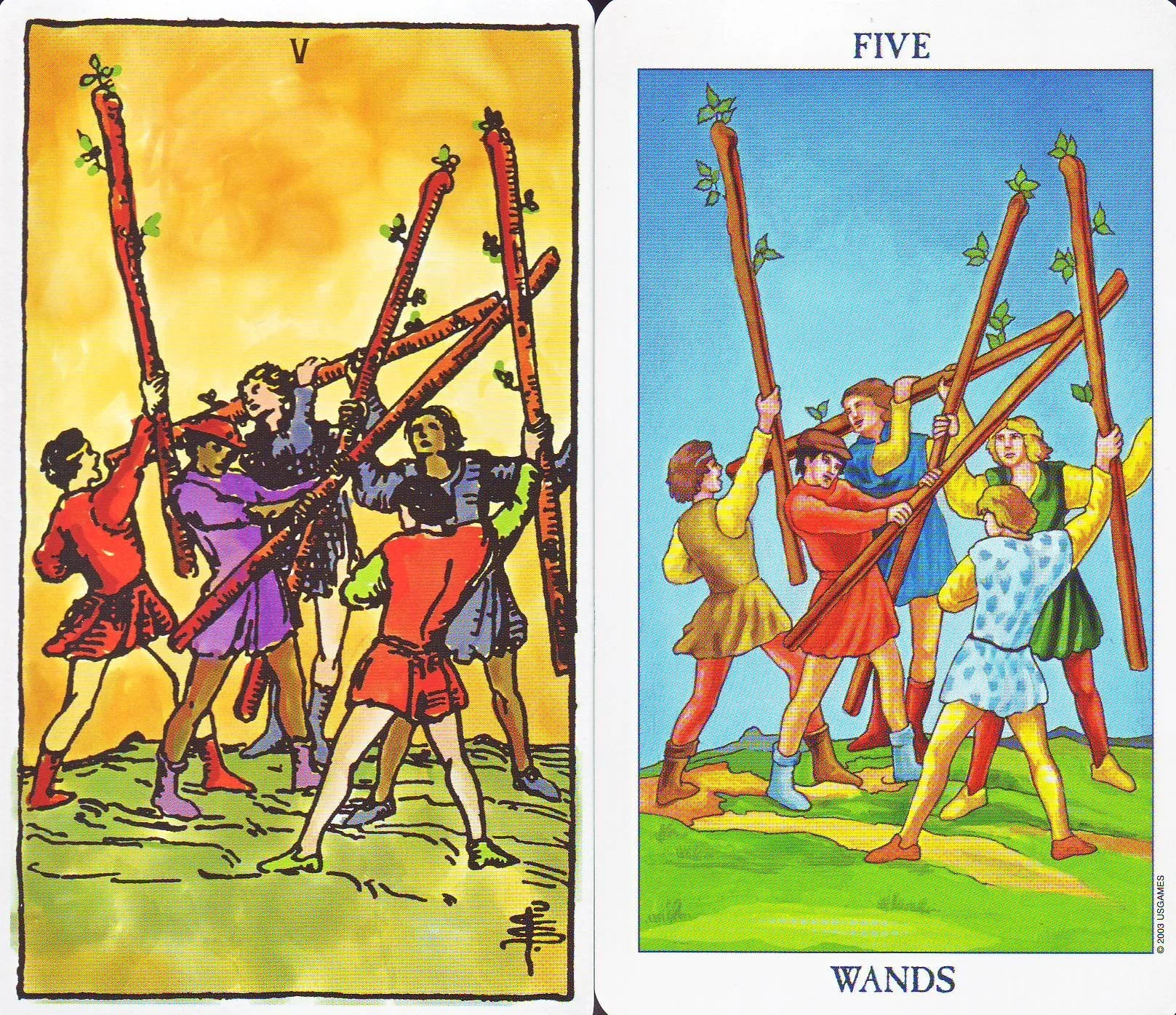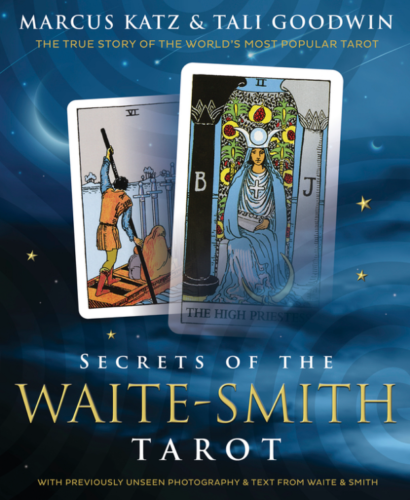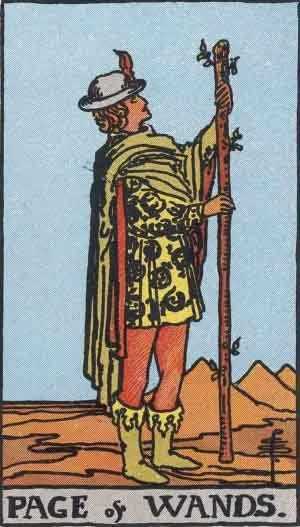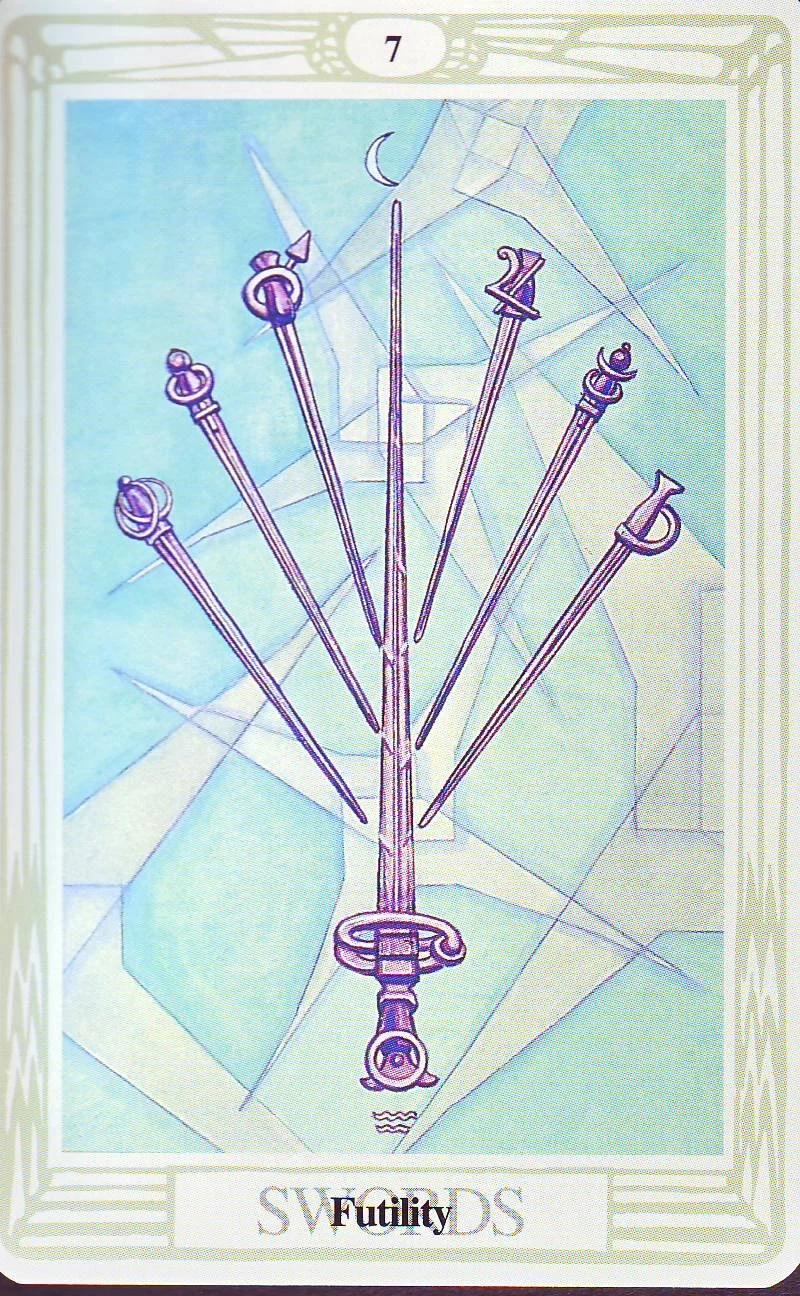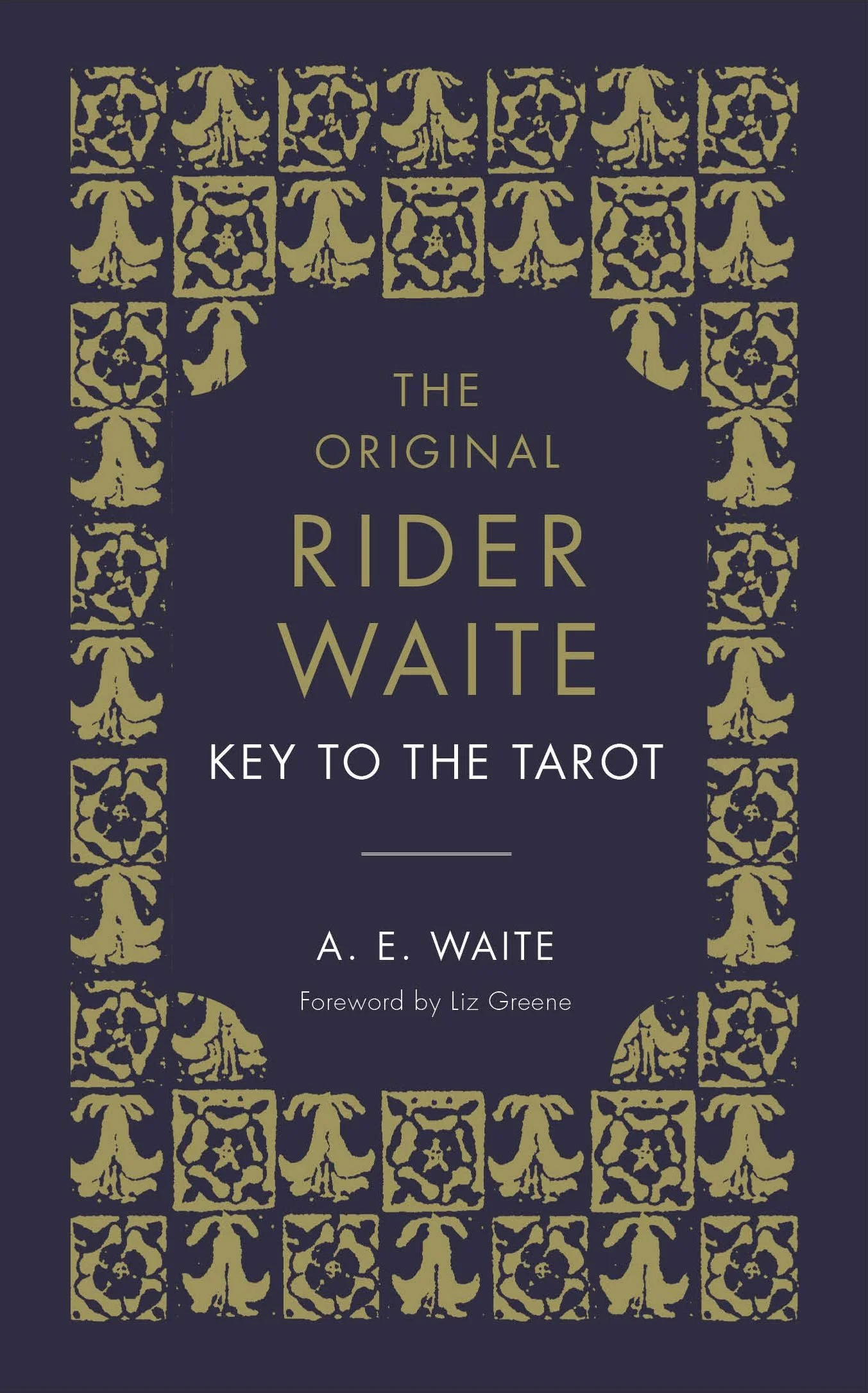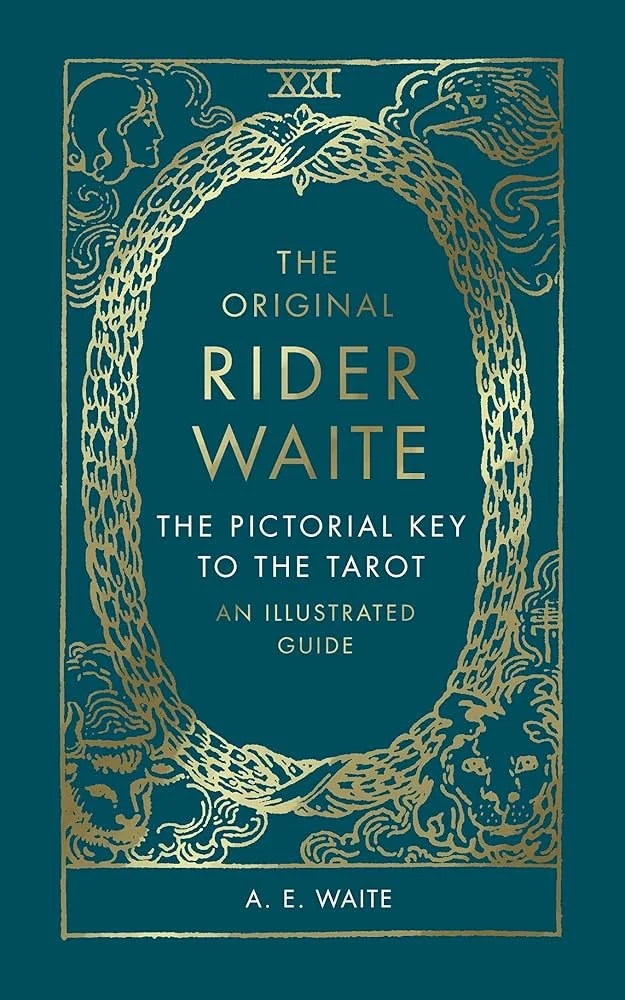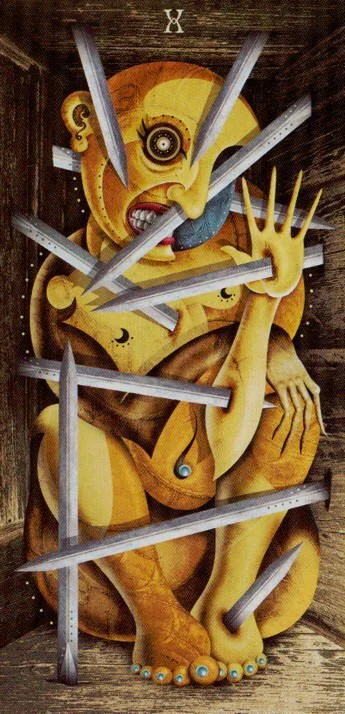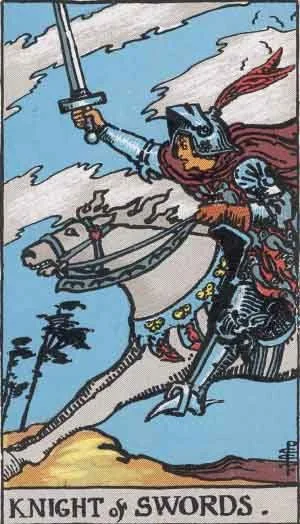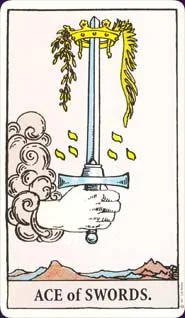
The Rider Waite Smith Tarot
My first Tarot card deck is the biggest - and, for many - the best of them all!
What does one say about The Rider-Waite-Smith Tarot? Iconic? THE Classic? Trend-setting and tradition-making? All of those are true - and many more besides! Without a shred of any doubt, it is the Tarot card deck that kick-started the modern day interest and intrigue with Tarot, and which has sparked a whole Tarot Tradition, as well as innumerable copies and clones - more of which later!
Back in the early 1900’s, Arthur Edward Waite and Pamela Coleman Smith, (known as Pixie,) were both members of the Hermetic Order of the Golden Dawn, a secret society that studied all things occult and esoteric. The Golden Dawn already had a treatise on Tarot cards, called Book T, which Waite based much of his original themes and descriptions that he provided to Pixie for his Rectified version of the cards. Pixie then added a liberal amount of her own symbolism and artistic style to develop the images that have become the biggest selling Tarot deck of all time.
The popularity of the Tarot deck that Waite and Smith developed has lead to a number of interesting phenomena. The deck is known by a few names - The Rider-Waite-Smith, or the Waite-Smith, or the Rider-Waite, and so on. Any of these terms is recognised in Tarot circles, as is the abbreviation RWS. The deck has also generated enough enthusiasm from its devotees to literally become one of the great Tarot Traditions, or schools of thought, upon which literally hundreds of subsequent decks have been based. Other Tarot traditions include the Tarot de Marseille (TdM) and the Golden Dawn/Thoth, more of which you will find in other pages on this site.
What really made the RWS stand out from its rivals was the fact that Waite and Smith produced a deck that, while not the first to do so, had a scene depicted on every one of the 78 cards, while most previous decks had some form of graphic representation of the number of “pips” each card counted for, much the same way as modern playing cards do today. These scenes, imagery and symbolism allowed card readers greater opportunity to derive meaning and narrative for each reading, as well as giving greater depth to the intuitive assessment of each card, thus producing a much broader story for those seeking advice.
The immense popularity of the Rider-Waite-Smith deck has resulted in a number of phenomena that few other decks have experienced, some of which are highly valuable, and some of which are less so. Firstly, as I have already mentioned, the deck has become the foundation of the RWS Tradition. This means that a lot of decks have been produced over the years that are based on the card sequence and symbology of the RWS with the scenes and images redesigned for other art styles and themes. There are literally hundreds of these decks currently available, and more are being produced every year. This means that there is probably a RWS-based Tarot deck out there in a style or fashion that suits pretty much every taste out there. Many of these are based on other popular themes and memes, such as Horror - Poe, Lovecraft, Vampires, etc. - or fantasy - Tolkien, Harry Potter - or cultures and religions - Egyptian, Celtic, Romany, Sufi - and so on. If you can think of a theme, there’s probably a RWS deck out there to match it. Many of the decks I will be reviewing on this site will show the wide range available.
The second phenomenon the RWS has benefited from is the humungous number of books written about the deck! These range from serious, scientific research into the deck and its symbology, through myriads of tomes describing how to use the deck and what the cards all mean, to scholarly investigations into the roots of Tarot and its applicability to modern societal needs! Naturally, I’ve collected a few of these books over the years, to say the least! However, it would make this page very unwieldy to list all of the available books here, so I’ve gathered as many of them as possible into a separate list as part of the Research section of this site. I hope you enjoy picking through them!
A RWS copy and a RWS clone.
Another consequence of the deck’s popularity, and a result of the rights to the deck being in the Public Domain, is the number of copies and clones of the deck that are available. The difference between a copy and a clone? A copy derives its artwork from Pamela Coleman Smith’s depictions, modifying them slightly to produce a very close but essentially different version of the deck. A clone literally takes the exact same images Pamela produced and wraps them up in a different package. Some of these copies and clones are actually very good, especially in regard to production quality, using very strong cardstock and delivering excellent product packaging - an area where the current official producers of the RWS - U.S. Games - are sadly really lacking! However, there are many clones and copies that are really cheaply produced, and you have to be very careful and do your research when buying a deck online. At least in a bookstore or New Age shop you can view and feel the deck before you buy, but many of these cheap decks are nothing more than a rip-off, so buyer beware!
I do have a few clones and copies in my list of decks, so seek out the reviews of those - I’ve usually tagged them as an RWS clone - so you can see what I think of them. Interestingly, they are not all bad!! I’ve also listed them on a separate page here!
The artistic style employed by Pamela Coleman Smith as she developed the deck pretty much places the time-period of the imagery in the European medieval era, with Kings and Queens on stereotypical thrones, Knights in shining armour on magnificent steeds, pages and peasants in frock dresses - and men in tights! :) Even the garb of much of the Major Arcana characters is from that same period, with a plethora of symbolic accoutrement included. These speak to the intention of the Hermetic Order of the Golden Dawn and similar organisations to recreate a chivalric society based on the values of previous knightly manifestations such as the Knights Templar and even the legends of King Arthur and the Knights of the Round Table. Interestingly, while you would expect this to date the deck somewhat, in actual fact the revival of interest in those times, sparked by the emergence of High Fantasy, modern Wicca, Gothic revivalist novels and a myriad of Vampire and Werewolf novels has allowed the deck to more than fit into the zeitgeist of 21st century style, and it still remains the go-to source for new artistic interpretations. If only Pixie could have seen how much her work is still appreciated, she would be the proudest and greatest of Tarot card artists - and she deserves that accolade!
Details of the Deck:
Tradition: RWS
Major Arcana: 22 cards
Minor Arcana: 56 cards
Court Cards: Page, Knight, Queen, King
Fire Suit: Wands
Air Suit: Swords
Water Suit: Cups
Earth Suit: Pentacles
Designer(s): A. E. Waite
Artist(s): Pamela Coleman Smith
Publisher: W. Rider Company, 1909/1910
Major Arcana:
0 - The Fool
1 - The Magician
2 - The High Priestess
3 - The Empress
4 - The Emperor
5 - The Hierophant
6 - The Lovers
7 - The Chariot
8 - Strength
9 - The Hermit
10 - Wheel of Fortune
The 7 of Swords from The RWS and the Thoth Tarot.
The Rider Company published Waite’s and Coleman’s Tarot deck in December 1909, with a much larger print run in March 1910. The availability of the deck certainly opened the flood gates for literally millions of devotees - recent estimates indicate that over 100 Million copies of the deck have been circulated across the world. Naturally, this has created quite the bandwagon, especially since the rights for the deck has been in the public domain since the 1970’s. Having said that, this success was not an overnight event, and the deck actually took many years to achieve its greatness. In fact, Pamela Coleman Smith died almost penniless and unknown outside of her circle of close friends in September 1951! On the other hand, A. E. Waite went on to produce another Tarot deck - The Waite-Trinick - but this was a limited version of a Major Arcana-only deck that was kept secret (and almost lost altogether) for almost 100 years!
The first editions of the RWS came with a small book - The Key to The Tarot - which Waite himself had written, combining information from the Golden Dawn documents and from the works of Eliphas Levi. Subsequent editions came with what was the first version of the Little White Book - LWB - which was a distillation of the Key to the Tarot. Fortunately, the Key to the Tarot and an illustrated, expanded version - The Pictorial Key to the Tarot - are readily available in a number of editions, and are well worth the investment to get the full A. E. Waite skinny on his ultra-famous deck! The versions I have are shown below.
A Ten of Swords in RWS tradition
11 - Justice
12 - The Hanged Man
13 - Death
14 - Temperance
15 - The Devil
16 - The Tower
17 - The Star
18 - The Moon
19 - The Sun
20 - Judgement
21 - The World
Where to buy your copy…
W.I.P.




